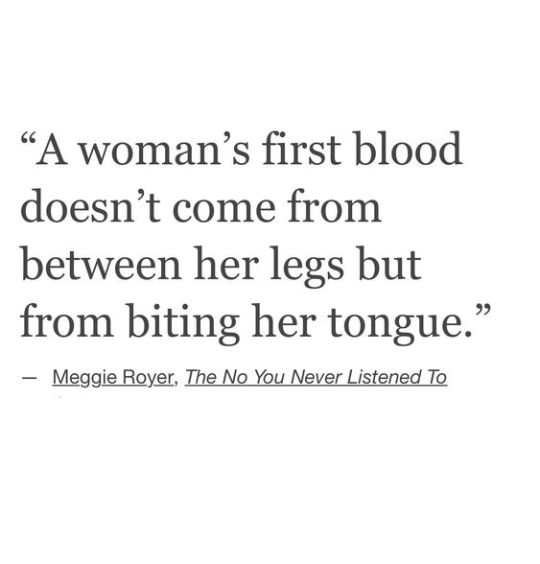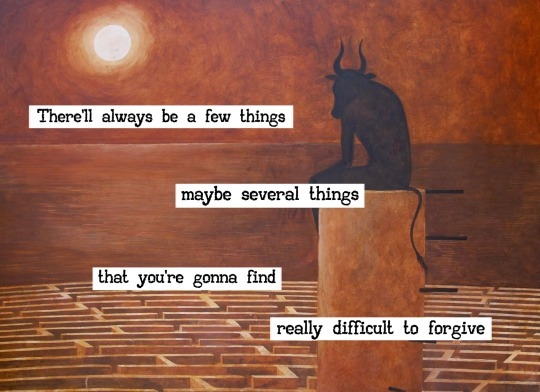#lisa feldman barrett
Explore tagged Tumblr posts
Text
Everyone who's ever learned a skill, whether it's driving a car or tying a shoe, knows that things that require effort today become automatic tomorrow with enough practice. They're automatic because your brain has tuned and pruned itself to make different predictions that launch different actions. As a consequence, you experience your self and the world around you differently. That is a form of free will, or at least something we can arguably call free will. We can choose what we expose ourselves to. My point here is that you might not be able to change your behaviour in the heat of the moment, but there's a good chance you can change your predictions before the heat of the moment. With practice, you can make some automatic behaviours more likely than others and have more control over your future actions and experiences than you might think. I don’t know about you, but I find this message hopeful, even though, as you might suspect, the extra bit of control comes with some fine print. More control also means more responsibility. If your brain doesn’t merely react to the world but actively predicts the world and even sculpts its own wiring, then who bears responsibility when you behave badly? You do. Now, when I say responsibility, I'm not saying people are to blame for the tragedies in their lives or the hardships they experience as a result. We can't choose everything that we're exposed to. I'm also not saying that people with depression, anxiety, or other serious illnesses are to blame for their suffering. I'm saying something else: Sometimes we're responsible for things not because they're our fault, but because we're the only ones who can change them.
Lisa Feldman Barrett, Seven and a Half Lessons About the Brain
70 notes
·
View notes
Text
latest headlines:


(techmonitor.ai)
vs the book How Emotions Are Made: The Secret Life of the Brain (Lisa Feldman Barrett, 2017)
"These same inconsistencies show up in infants.
If facial expressions are universal, then babies should be even more likely than adults to express anger with a scowl and sadness with a pout, because they’re too young to learn rules of social appropriateness.
And yet when scientists observe infants in situations that should evoke emotion, the infants do not make the expected expressions. (…)
It means that on different occasions, in different contexts, in different studies, within the same individual and across different individuals, the same emotion category involves different bodily responses.
Variation, not uniformity, is the norm.
These results are consistent with what physiologists have known for over fifty years: different behaviors have different patterns of heart rate, breathing, and so on to support their unique movements.
Despite tremendous time and investment, research has not revealed a consistent bodily fingerprint for even a single emotion. (…)
Emotion concepts are the secret ingredient behind the success of the basic emotion method.
These concepts make certain facial configurations appear universally recognizable as emotional expressions when, in fact, they’re not.
Instead, we all construct perceptions of each other’s emotions.
We perceive others as happy, sad, or angry by applying our own emotion concepts to their moving faces and bodies.
We likewise apply emotion concepts to voices and construct the experience of hearing emotional sounds. (…)
As emotion concepts become more remote, people do worse and worse at recognizing the emotions that the posed stereotypes are supposedly displaying.
This progression is strong evidence that people see an emotion in a face only if they possess the corresponding emotion concept, because they require that knowledge to construct perceptions in the moment. (…)
They only appear to be universal under certain conditions—when you give people a tiny bit of information about Western emotion concepts, intentionally or not."
more: tagged/how emotions are made
8 notes
·
View notes
Text
Wow. Do yourself a favor and listen to this all the way through. So many nuggets of life changing wisdom of self perception. we are always a 2 way communication between body and brain, often called top down and bottom up in psychotherapy.
Emotions are a summary of body-to-brain signals (body homeostasis). Feeling are a story your brain constructs to predict an outcome based on past experiences and current body summary.. Depression starts off as a significant biochemical imbalance to conserve resources: if not corrected it becomes the story that makes breaking free of depression "feel" unsafe and impossible. But creating new experiences in the present will eventually allow change in how your brain rewrites its story about the past and therefore about the future..thus changing your default emotion and current feelings.
13 notes
·
View notes
Text
youtube
5 notes
·
View notes
Text
youtube
Your social reality isn’t an absolute reality. | Lisa Feldman Barrett
3 notes
·
View notes
Text
Your brain doesn’t detect reality. It creates it.
Our perception of reality is not an exact representation of the objective truth but rather a combination of sensory inputs and the brain’s interpretation of these signals. This interpretation is influenced by past experiences and is often predictive, with the brain creating categories of similar instances to anticipate future events. Follow The Well Facebook:…

View On WordPress
0 notes
Video
youtube
Can you look at someone's face and know what they're feeling? Does everyone experience happiness, sadness and anxiety the same way? What are emotions anyway? For the past 25 years, psychology professor Lisa Feldman Barrett has mapped facial expressions, scanned brains and analyzed hundreds of physiology studies to understand what emotions really are. She shares the results of her exhaustive research -- and explains how we may have more control over our emotions than we think.
Check out more TED Talks: http://www.ted.com
The TED Talks channel features the best talks and performances from the TED Conference, where the world's leading thinkers and doers give the talk of their lives in 18 minutes (or less). Look for talks on Technology, Entertainment and Design -- plus science, business, global issues, the arts and more.
Follow TED on Twitter: http://www.twitter.com/TEDTalks Like TED on Facebook: https://www.facebook.com/TED
#Lisa Feldman Barrett#emotions#affect#psychology#facial expressions#physiology#exhaustive research#tedtalks#ted
0 notes
Text

Lisa Feldman Barrett, How Emotions Are Made: The Secret Life of the Brain
1K notes
·
View notes
Text

By: Greg Lukianoff
Published: Nov 2, 2024
Anyone who confuses speech with violence has likely never been punched in the face. I have been many times, and I have to tell you: It hurts in a way no insult ever could.
Unfortunately, not everyone understands this. In a disturbing new poll, my organization, the Foundation for Individual Rights and Expression, has found that 80% of Americans agreed at least slightly that "words can be violence."
But it’s even worse than that. Nearly half of Americans say the phrase "words can be violence" either "mostly" or "completely" describes their thoughts.
I know intimately why this is not just wrong, but a real threat to our democracy.
The scariest moment of my life happened in my sophomore year of high school. I remember the exact date: March 14, 1991. I walked out of school to see one of my friends covered in blood.
He had picked a fight with a kid and had been badly beating him. Turns out the kid had been bullied a few too many times. He snapped, stabbing my friend close to his sternum. I was pretty sure my friend was going to die – and if the knife had gone in at a slightly different angle, he would have.
This was not a battle of words, and that almost cost my friend his very life.
Whether or not we have personally experienced violence, we are all uncomfortably close to the unparalleled bloodshed of the 20th century – the trenches of World War I, the bombings of World War II, the Holocaust, the Great Leap Forward, and so much more.
Violence is real, and it is horrible.
That’s why it is an insult to anyone who has ever suffered from it to argue that words can even compare. I’m not saying words aren’t potent and powerful. I wouldn’t do the work I do defending freedom of speech if I thought that. Words have the power to change the world.
And I’m also not saying physical pain is all that matters. I’ve been very open about my own struggles with depression and suicidal ideation. But words don’t draw blood or break bones, and that difference is critically important.
FIRE has been tracking this "words are violence" phenomenon on campus for years.
We saw the argument made full-throatedly in the wake of the violent response to conservative provocateur Milo Yiannopoulos in 2017, when a student paper at UC Berkeley – the school where the free speech movement was born – published article after article arguing that Milo’s hate speech demanded violent retaliation.
That same year, Northeastern University psychology professor and author Lisa Feldman Barrett penned an op-ed in The New York Times arguing that because words and violence can both cause a stress response, there’s no clear distinction between the two.
In 2021, an editorial in Case Western Reserve University Observer reasoned that protesting outside an abortion clinic is "inherently violent." In 2022, Cornell students disrupting an Ann Coulter event shouted, among other things, "Your words are violence." Just last year, the pride office at the University of Colorado Boulder warned that misgendering could be "considered an act of violence."
But if you’re among the 8 in 10 Americans who agree that words can be violence, I ask you to consider this: Words remain the best alternative to violence ever invented.
In July, a would-be assassin’s bullet came within a fraction of an inch of killing one of our two major presidential candidates. It tragically ended the life of a firefighter and father – and shortly after, the shooter was killed as well. All this happened before the eyes of supporters and even children.
That alone should remind us that speech – even horrible, hurtful and hateful speech – is not violence. Violence is a very different thing. And when that violence turns political, all bets are off.
One of the core differences between a liberal democracy and authoritarian states is that we don’t settle our differences with violence. We do so democratically with words. We must preserve this at all costs.
Tensions are high in the nation right now, which is why it’s even more important to remember the difference between words and actions. People get understandably heated in the final days of an election, but confusing words for weapons ensures violence. This is a recipe for disaster, particularly when six in 10 Americans fear post-Election Day violence.
We must remember in these tribal times that the bright line between action and speech is one of the best things humankind has ever devised. As an unknown thinker adored by Freud once said, "Civilization began the minute someone hurled an insult rather than a stone."
If most Americans forget this distinction, it’s going to hurt way more than we expect.
Greg Lukianoff is president and CEO of the Foundation for Individual Rights and Expression (FIRE) and the co-author, along with Rikki Schlott, of the new book, "The Canceling of the American Mind: Cancel Culture Undermines Trust and Threatens Us All—But There Is a Solution."
==
Words are words. Violence is violence.
The people who tell you "words are violence" are telling you that if you say something they don't like, they're going to claim the right to physically attack you.
“My own view is that words are words and bullets are bullets, and that it is important to keep this straight. For you do not have to be Kant to see what comes after ‘offensive words are bullets’: if you hurt me with words, I reply with bullets, and the exchange is even.” – Jonathan Rauch, “Kindly Inquisitors”
#Greg Lukianoff#Foundation for Individual Rights and Expression#free speech#freedom of speech#words are not violence#words are violence#violence is violence#words are words#religion is a mental illness
6 notes
·
View notes
Text
But if you are stressed over and over and over again, without much opportunity to recover, the effects can be more grave. If you constantly struggle in a simmering sea of stress, and your body budget accrues an ever-deepening deficit, that's called chronic stress, and it does more than just make you miserable in the moment. Over time, anything that contributes to chronic stress can gradually eat away at your brain and cause illness in your body. This includes physical abuse, verbal aggression, social rejection, severe neglect, and the countless other creative ways that we social animals torment one another. It's important to understand that the human brain doesn't seem to distinguish between different sources of chronic stress. If your body budget is already depleted by the circumstances of life - like physical illness, financial hardship, hormone surges, or simply not sleeping or exercising enough - your brain becomes more vulnerable to stress of all kinds. This includes the biological effects of words designed to threaten, bully, or torment you or people you care about. When your body budget is continually burdened, momentary stressors pile up, even the kind that you'd normally bounce back from quickly. It's like children jumping on a bed. The bed might withstand ten kids bouncing at the same time, but the eleventh one snaps the bed frame.
Lisa Feldman Barrett, Seven and a Half Lessons About the Brain
43 notes
·
View notes
Text

















Hanif Abdurraqib, They Can't Kill Us Until They Kill Us
Glennon Doyle, Untamed
Elly Smallwood, Saturn
Meggie Royer, The No You Never Listened To
Volker Hermes, Hidden Duvivier
Athena Nassar, Love Is Not Always Song, but the Swelling
Siobhan Scherezade, Code
Eva Gonzalès, La Toalette
David Levithan, How They Met and Other Stories
Mark Wolynn, It Didn't Start with You: How Inherited Family Trauma Shapes Who We Are and How to End the Cycle
Lisa Feldman Barrett, How Emotions Are Made: The Secret Life of the Brain
Jane Austen, Sense and Sensibility
The Mountain Goats, Up The Wolves x Jordi Garriga Mora, Minotauro
Kaveh Akbar, Calling A Wolf A Wolf
22 notes
·
View notes
Text
Om recht te doen aan die complexiteit, hebben we méér woorden nodig. De Amerikaanse psycholoog en neurowetenschapper Lisa Feldman Barrett (een van de meest geciteerde onderzoekers in haar werkveld) ontdekte dat mensen met een grote emotionele woordenschat mentaal gezonder zijn. In het boek How Emotions Are Made (2017) laat Feldman Barrett zien hoe taal onze emotionele ervaring vormt. Als je naast ‘angstig’ ook gevoelens als ‘zenuwachtig’, ‘verlegen’ en ‘opgewonden’ kunt herkennen en benoemen, ervaar je minder angst. Een groter vocabulaire stelt je in staat meer variatie te ervaren en verschillende verhalen over je ervaring te onderzoeken. Dat maakt mentaal flexibel.
De mentale gezondheidscrisis, zou je kunnen zeggen, is mede een taalcrisis. Door de alomtegenwoordigheid van therapietaal op platforms als TikTok, in combinatie met lange wachtlijsten voor echte therapie, verschraalt de woordenschat waarmee jongeren zichzelf kunnen begrijpen. Dat werkt mentale inflexibiliteit in de hand. In het ergste geval verandert overhaaste zelfdiagnose mentaal ongemak in een specifieke, door TikTok geïnspireerde stoornis.
#readings#nederlands#laatste alinea vind ik zelf een zwaktebod#categorie Ja Eens ik snap denk ik wat je bedoelt maar het had 400 woorden extra nodig om niet vervelend te klinken
22 notes
·
View notes
Text
Bibliography: books posted on this blog in 2024
Sara AHMED (2010): The Promise of Happiness
Cat BOHANNON (2023): Eve: How the Female Body Drove 200 Million Years of Human Evolution
Holly BRIDGES (2014): Reframe Your Thinking Around Autism: How the Polyvagal Theory and Brain Plasticity Help Us Make Sense of Autism
Johann CHAPOUTOT (2024): The Law of Blood: Thinking and Acting as a Nazi
Caroline CRIADO-PEREZ (2019): Invisible Women: Exposing Data Bias in a World Designed for Men
Gavin DE BECKER (2000): Survival Signals That Protect Us from Violence
Virginie DESPENTES (2006): King Kong Theory
Annie ERNAUX (2000): Happening
Lisa FELDMAN BARRETT (2017): How Emotions Are Made: The Secret Life of the Brain
Shaun GALLAGHER (2012): Phenomenology
David GRAEBER (2015): The Utopia of Rules: On Technology, Stupidity, and the Secret Joys of Bureaucracy
Henrik HASS and Torben HANSEN (2023): Unconscious Intelligence in Cybernetic Psychology
Yuval Noah HARARI (2024): Nexus: A Brief History of Information Networks from the Stone Age to AI
Sarah HENDRICKX (2015): Women and Girls with Autism Spectrum Disorder: Understanding Life Experiences from Early Childhood to Old Age
Sarah HILL (2019): This Is Your Brain on Birth Control: The Surprising Science of Women, Hormones, and the Law of Unintended Consequences
Victor HUGO (1831): Notre-Dame de Paris
Luke JENNINGS (2017): Killing Eve: Codename Villanelle
Bernardo KASTRUP (2021): Decoding Jung’s Metaphysics: The Archetypal Semantics of an Experiential Universe
Roman KOTOV, Thomas JOINER, Norman SCHMIDT (2004): Taxometrics: Toward a new diagnostic scheme for psychopathology
Benjamin LIPSCOMB (2021): The Women are Up to Something: How Elizabeth Anscombe, Philippa Foot, Mary Midgley, and Iris Murdoch Revolutionized Ethics
Dorian LYNSKEY (2024): Everything Must Go: The Stories We Tell About The End of the World
Kate MANNE (2024): Unshrinking: How to Fight Fatphobia
Mario MIKULINCER (1994): Human Learned Helplessness: A Coping Perspective
Jenara NERENBERG (2020): Divergent Mind: Thriving in a World That Wasn’t Designed for
Lucy NEVILLE (2018): Girls Who Like Boys Who Like Boys: Women and Gay Male Pornography and Erotica
Peggy ORNSTEIN (2020): Boys & Sex: Young Men on Hookups, Love, Porn, Consent, and Navigating the New Masculinity
Lucile PEYTAVIN (2021): Le coût de la virilité
Lynn PHILLIPS (2000): Flirting with Danger: Young Women’s Reflections on Sexuality and Domination
Stephen PORGES (2017): The Pocket Guide to the Polyvagal Theory: The Transformative Power of Feeling Safe
Joëlle PROUST (2013): The Philosophy of Metacognition: Mental Agency and Self-Awareness
John SARLO: The Mindbody Prescription: Healing the Body, Healing the Pain
Jessica TAYLOR (2022): Sexy But Psycho: How the Patriarchy Uses Women’s Trauma Against Them
Manos TSAKIRIS and Helena DE PREESTER (2018): The Interoceptive Mind: From Homeostasis to Awareness
8 notes
·
View notes
Text
Books about game design but not really but really
Collecting my suggestions & others' from a twitter thread (remember those?)
Invisible Cities, Italo Calvino Pilgrim in the Microworld, David Sudnow Breathing Machines, Leigh Alexander Chronicle of a Death Foretold, Gabriel Garcia Marquez Einstein’s Dreams, Alan Lightman An Inventory of Losses, Judith Schalansky Visit to a Small Planet, Elinor Fuchs (https://web.mit.edu/jscheib/Public/foundations_06/ef_smallplanet.pdf) Noises Off, Michael Freyn Influence, Robert Cialdini Ficciones, Jorge Luis Borges Wonderbook, Jeff VanderMeer Pale Fire, Vladimir Nabokov The Westing Game, Ellen Raskin Motel of the Mysteries, David Macaulay Ghost Stories for Darwin, Banu Subramaniam (esp. “Singing the Morning Glory Blues”) Batman: The Animated Series Writer’s Bible (https://dcanimated.com/WF/batman/btas/backstage/wbible/) Dictionary of the Khazars, Milorad Pavić The Passion, Jeannette Winterson Rainbows End, Vernon Vinge Cat’s Cradle, Kurt Vonnegut Between the Acts, Virginia Woolf Where Did You Go? Out. What Did You Do? Nothing., Robert Paul Smith A Telling of the Tales, William J. Brooke Finishing The Hat & Look, I Made A Hat, Stephen Sondheim Finite and Infinite Games, James P. Cause Exercises in Style, Raymond Queneau The Design of Everyday Things, Don Norman Life: A User's Manual, Georges Perec The Information: A History, A Theory, A Flood, James Gleick 7 1/2 Lessons About The Brain, Lisa Feldman Barrett
additions: Microserfs, Douglas Coupland The Eyes of the Skin, Juhani Pallasmaa House of Leaves, Mark Z. Danielewski Piranesi, Susanna Clarke
13 notes
·
View notes
Text
"What we call mental illnesses, then, may be rational body-budgeting for the short term that’s out of sync with the immediate environment, the needs of other people, or your own best interests down the road. Rational behavior, therefore, means making a good body-budgeting investment in a given situation."
— Lisa Feldman Barrett, Seven and a Half Lessons About the Brain (2020)
2 notes
·
View notes
